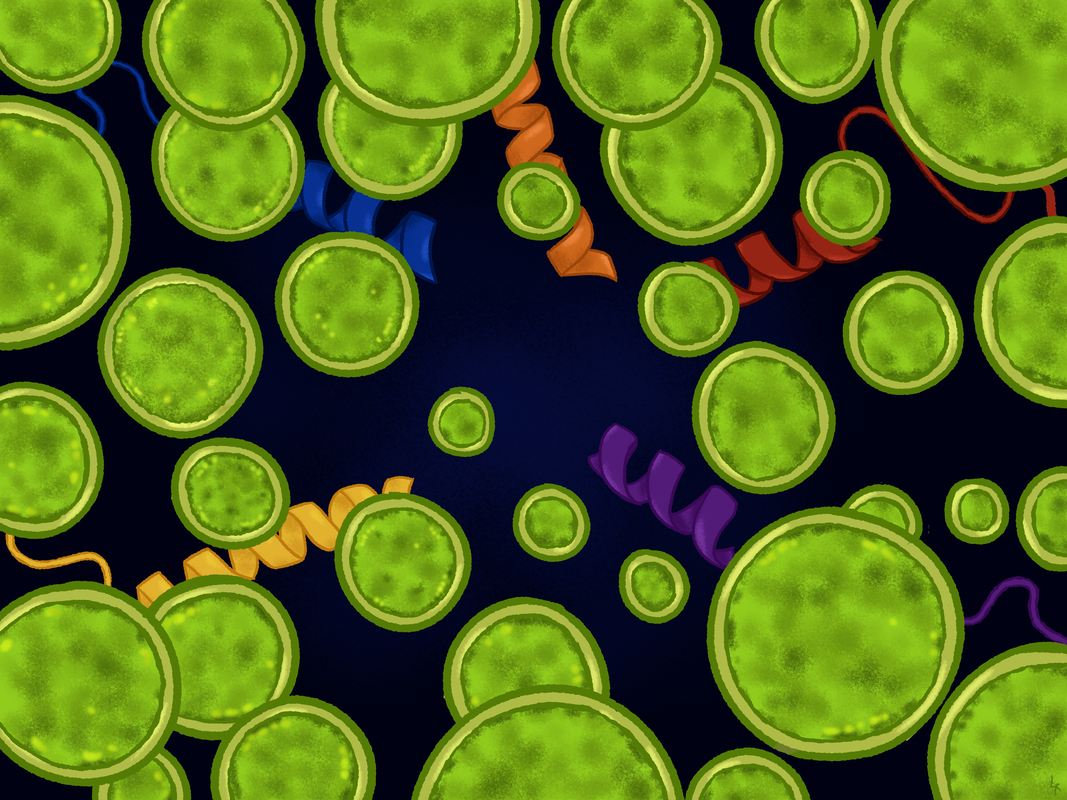 Illustrated by Yi Qu By Sydney Wells Algae: it’s green, slimy, and possibly the future of food. The waterborne microorganisms present high potential for being cultivated as one of the main sources of protein in the human diet; it’s more environmentally sustainable than and has similar nutritional value as currently existing protein sources. It is highly flexible and can be incorporated into foods in many different ways, such as powders or nutritional bars, which only adds to its potential. As of 2014, approximately one billion people across the globe consumed an insufficient amount of protein. With an ever-growing population, this problem will only continue to increase. Currently, the two most popular sources of protein in the human diet are animal and plant proteins. Cultivating animal sources specifically is highly taxing on the environment; various meats require between 42 and 258 square meters of land to produce only one kilogram of protein. This land includes space for animals to graze and live, as well as area to grow animal feed. Besides this significant land use, meat production causes other specific environmental problems: it requires copious amounts of freshwater to keep grazing lands vital to grow feed, cows emit large amounts of methane into the atmosphere, and rainwater runoff can collect harmful levels of nutrients from animal waste. These drawbacks, along with the fact that some species of algae can have a dry weight containing up to 70% protein, set up algae to be a good competitor in the human diet. Growing algae has significantly less negative impacts on the environment when compared to animal protein sources. It requires only 2.5 (or less!) square meters of land to cultivate one kilogram of algae-based protein. This number is much lower than those aforementioned in regard to meat production. The production of algae also requires very low amounts of freshwater, as shown in research concerning algae’s potential use as a biofuel. Not only is algae environmentally sustainable, but its nutritional profile is incredibly compatible with human dietary needs. Algae contains similar amino acids to chicken eggs; they are the ones that human bodies cannot produce on their own, and that we must get from outside sources. Amino acids are the building blocks of proteins, and thus their compatibility is important in finding an appropriate protein source. Algae also has other nutritional value besides its protein content. They contain highly digestible carbohydrates in the form of starches, glucose, and sugars, along with omega-3 fatty acids. Algae can also produce almost all of the vitamins essential to human health, such as folic acid, vitamin B12, and many others. It’s worth noting that not all species of algae have the same nutritional content; for example, red and green algae tend to have higher protein contents than brown algae. Differences like these have led multiple species of algae to dominate within the food and supplement industries; Arthrospira platensis (spirulina) and various Chlorella species are especially popular currently. One of the most popular forms of algae on the market right now is nutritional powder; brands like Athletic Greens combine dried algae with other powders, often with the intention of being mixed with water and turned into a shake. Another alternative is algae in gel form, available from companies like Herbal Vineyards. This can be mixed into soups, desserts, or teas, and the brand claims that it does so without changing the taste whatsoever. Between the environmental sustainability and high nutritional value, it’s hard to deny that algae is a potential superfood of the future, especially in terms of protein production. The United States Senate appears to agree; the Farm Bill passed in 2018 included algae agriculture in qualifying for federal crop insurance, and founded an Algae Agriculture Research Program under the US Department of Agriculture. Whether it is dusted atop a salad or incorporated into baked goods, algae has high potential for becoming a major source of human protein intake in the coming years.
0 Comments
Leave a Reply. |
Categories
All
Archives
April 2024
|


